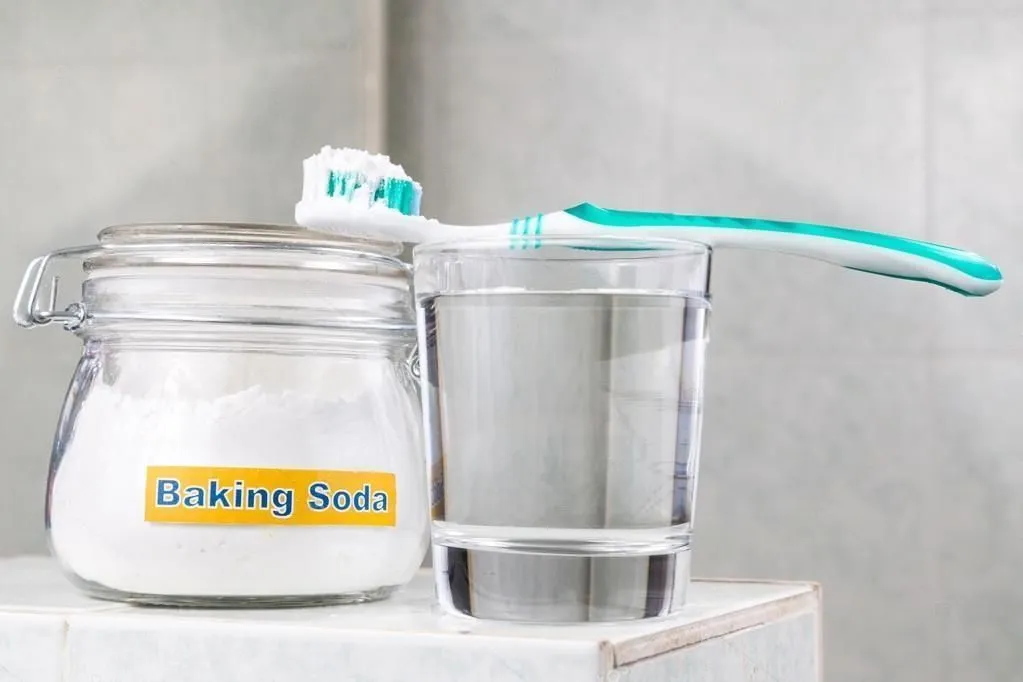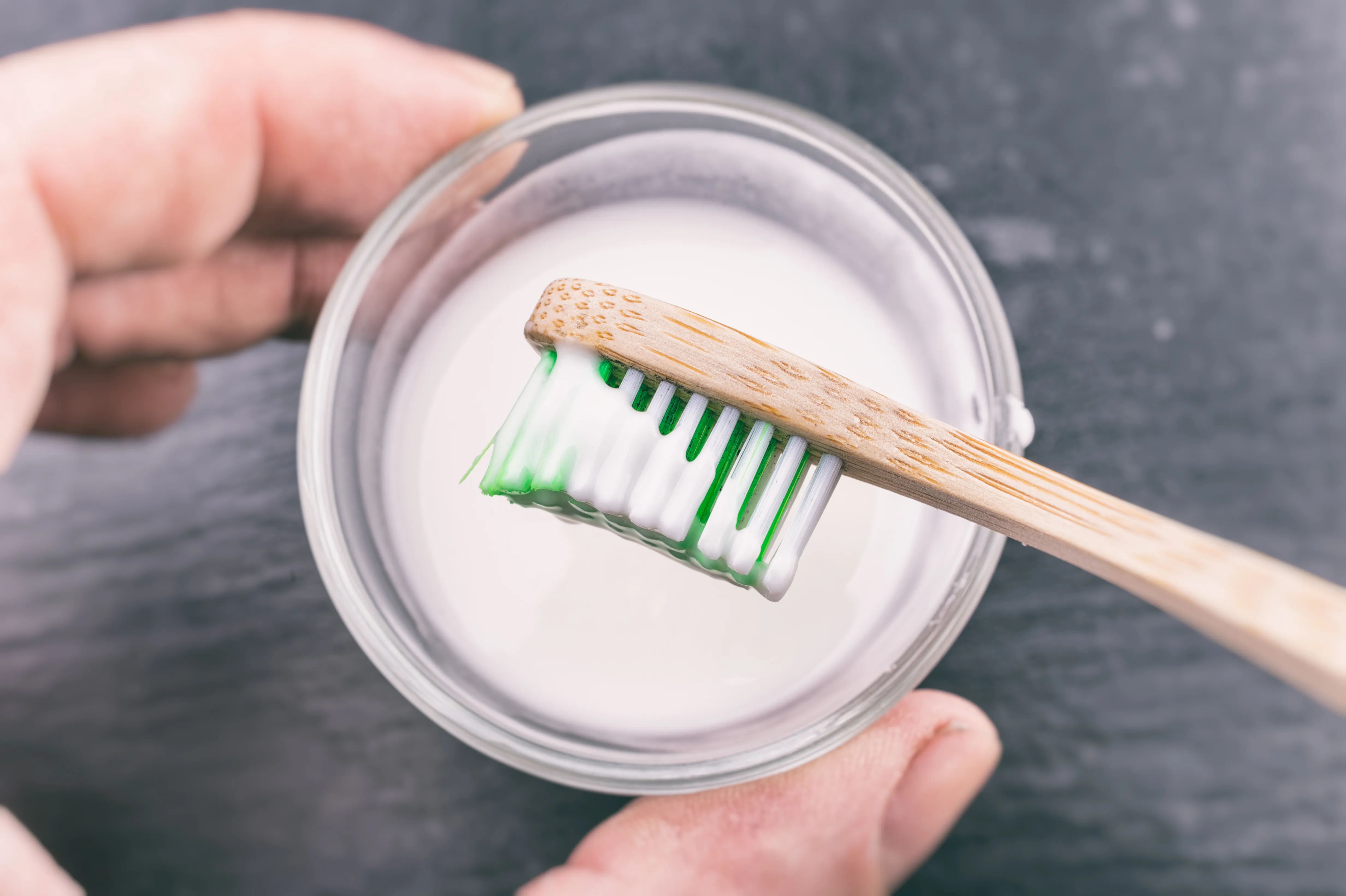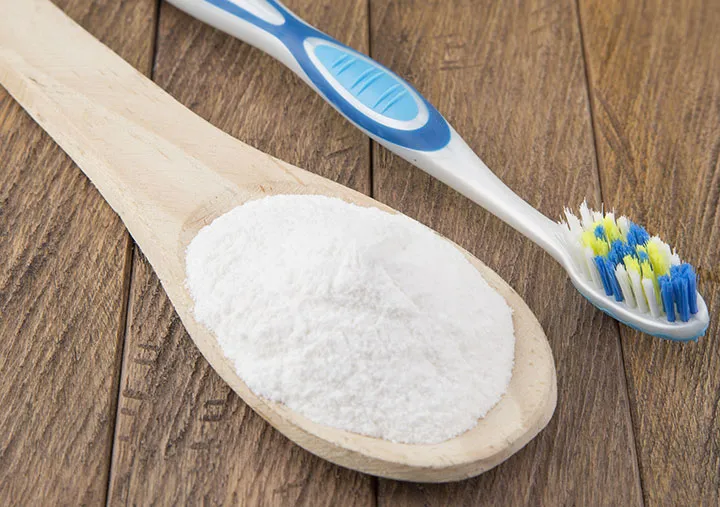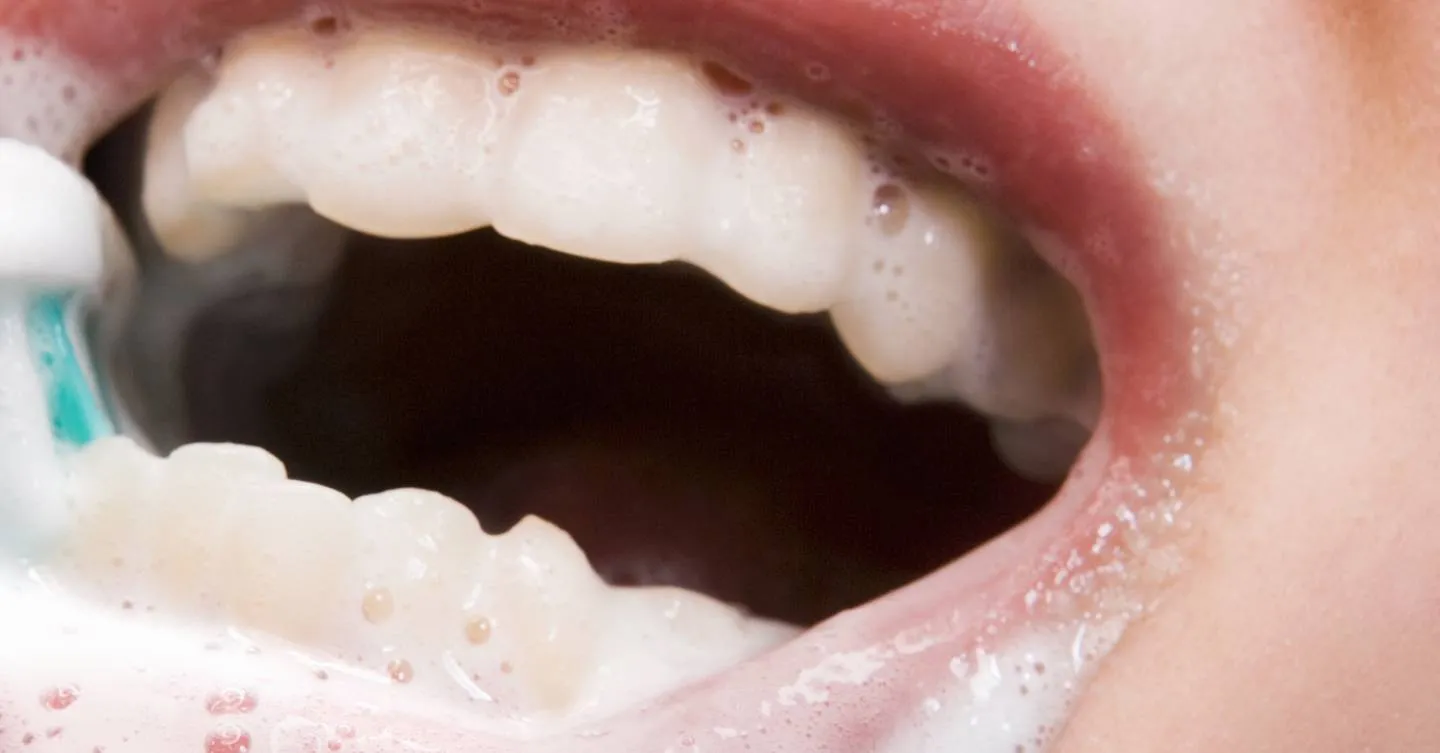Achieving a brighter, more confident smile is a common goal, and many people turn to DIY solutions to avoid expensive professional treatments. Baking soda, a readily available household item, has gained popularity as a potential teeth whitening agent. This comprehensive guide will explore everything you need to know about using baking soda for teeth whitening, from its properties and benefits to its potential risks and alternative methods. You’ll learn how baking soda works, how to safely use it, and how to maintain your newly brightened smile. Whether you are new to teeth whitening or seeking alternative methods, this guide provides valuable insights into this widely used method. The information here is designed to help you make informed decisions about your oral health and achieve the smile you’ve always wanted.
What is Baking Soda and How Does it Work?
Baking soda, also known as sodium bicarbonate (NaHCO3), is a white crystalline powder. It’s a versatile compound with various applications, from cooking and cleaning to personal care. Its effectiveness in teeth whitening stems from its mild abrasive properties. When used on teeth, baking soda helps to scrub away surface stains caused by food, drinks (like coffee and tea), and tobacco. This abrasive action is key to its stain-removing capabilities. It is also slightly alkaline, which can help neutralize acids in the mouth. These acids can contribute to tooth decay and erosion. The neutralization of acids by baking soda can create a healthier oral environment, potentially further improving the appearance of your teeth. Additionally, baking soda has a mild antibacterial effect, contributing to overall oral hygiene.
Baking Soda Composition and Properties
Understanding the composition of baking soda is crucial to comprehending its effects. Baking soda is composed of sodium, hydrogen, carbon, and oxygen atoms. Its molecular structure is responsible for its characteristic properties, which include its alkaline nature and its ability to react with acids. This reaction is often why baking soda is used as a leavening agent in baking; it produces carbon dioxide gas, causing dough to rise. The mild abrasiveness of baking soda is another key property, making it effective in removing surface stains without causing significant damage to the enamel when used carefully. When dissolved in water, baking soda releases ions, contributing to its cleaning and stain-removing abilities. The gentle abrasive action can help to lift stains and reveal the natural whiteness of your teeth.
Baking Soda’s Abrasive Action

The primary mechanism by which baking soda whitens teeth is its abrasive action. This mild abrasiveness helps to physically remove surface stains. Surface stains are typically caused by pigments from food, drinks, and smoking that adhere to the enamel. The small particles of baking soda gently scrub the tooth surface, dislodging these stains and restoring the teeth’s natural color. The abrasive action is not aggressive enough to damage the enamel significantly. However, it is essential to use baking soda with caution, as excessive or improper use can lead to enamel erosion over time. It’s critical to be mindful of the pressure applied during brushing and the frequency of use to avoid any potential negative effects. This approach is usually safe when used in moderation and combined with proper oral hygiene practices.
Why Baking Soda for Teeth Whitening?
Baking soda’s popularity as a teeth-whitening agent stems from several key factors. It’s affordable, readily accessible, and easy to use. Unlike many commercial teeth-whitening products, baking soda is a simple, natural substance that most people already have at home. Its effectiveness in removing surface stains makes it an attractive option for those seeking a brighter smile without the expense of professional treatments. The ease of creating a paste with baking soda and water makes it an accessible choice for daily or regular use. For individuals seeking a more natural approach to teeth whitening, baking soda offers a straightforward and cost-effective solution. Its widespread availability and ease of incorporation into oral hygiene routines contribute to its appeal. Finally, the convenience of being able to brighten your teeth at home is a significant advantage.
Benefits of Using Baking Soda
The benefits of using baking soda for teeth whitening extend beyond just stain removal. Its mild abrasive action can help to polish the teeth, leaving them feeling smoother and cleaner. Some users report that baking soda helps to freshen breath. This can be attributed to its ability to neutralize acids and reduce bacteria in the mouth. Baking soda’s alkaline nature can help create a more balanced pH in the oral cavity, which is beneficial for overall oral health. When combined with other ingredients, such as hydrogen peroxide, baking soda can offer even more significant whitening results. Its ability to reach into those hard-to-reach areas within the mouth is also a benefit, promoting a thorough cleaning. The effectiveness of removing stains and improving overall oral hygiene makes it a valuable addition to a daily dental routine.
Whitening Capabilities

Baking soda’s whitening capabilities are primarily focused on removing surface stains. It is most effective at removing stains caused by coffee, tea, tobacco, and certain foods. It may not be as effective on intrinsic stains, which are stains located within the tooth structure. The degree of whitening achieved with baking soda varies from person to person, depending on the severity of the stains and the frequency of use. Results are typically gradual, with noticeable improvements appearing over weeks or months of consistent use. Baking soda works best when used as part of a comprehensive oral hygiene routine, including regular brushing, flossing, and dental check-ups. While it may not provide the dramatic whitening effects of professional treatments, baking soda can provide a noticeable brightening effect, contributing to a more aesthetically pleasing smile.
How to Use Baking Soda for Teeth Whitening
Using baking soda for teeth whitening is a simple process. The most common method involves creating a paste with baking soda and water. Applying the paste to your teeth requires gentle and careful brushing. Brushing with excessive force can damage the enamel, so it is important to use a soft-bristled toothbrush and light pressure. Brushing in a circular motion is recommended for thorough cleaning. After brushing, rinse your mouth thoroughly with water to remove any remaining baking soda paste. You can use baking soda on its own or combine it with other ingredients, such as hydrogen peroxide, for enhanced whitening effects. It is advisable to consult with your dentist before starting any new teeth-whitening regimen to ensure its suitability for your specific needs.
Simple Baking Soda Paste Recipe
Creating a baking soda paste is simple. Combine one teaspoon of baking soda with enough water to form a thick paste. The amount of water will vary, so add it gradually until you achieve the desired consistency. Once the paste is ready, it can be applied to your toothbrush and used for brushing. To enhance the paste, you can add a few drops of essential oils like peppermint. However, avoid any abrasive additives. It’s essential to use fresh paste each time, and you should never store it for later use. This straightforward recipe allows you to incorporate baking soda into your oral care routine easily. The simplicity of the recipe makes it accessible and easy to implement, providing a quick and convenient way to try out baking soda for teeth whitening.
Baking Soda and Hydrogen Peroxide Combination

Combining baking soda with hydrogen peroxide can potentially boost the teeth-whitening effects. Hydrogen peroxide is a mild oxidizing agent that helps to bleach the teeth and remove stains. To use this combination, mix baking soda with a small amount of hydrogen peroxide to form a paste. The typical ratio is one teaspoon of baking soda with a few drops of 3% hydrogen peroxide. Brush your teeth with the paste for about two minutes, then rinse thoroughly with water. Be careful not to swallow the mixture, as hydrogen peroxide can cause irritation if ingested. While the combination may provide better whitening results, it is crucial to exercise caution and avoid overuse. Excessive use of hydrogen peroxide can irritate the gums and increase tooth sensitivity. Consulting with your dentist is recommended before using this combination.
Application Techniques
Proper application techniques are essential for maximizing the benefits of baking soda while minimizing potential risks. Use a soft-bristled toothbrush to avoid damaging the enamel. Apply a small amount of the baking soda paste to the toothbrush. Brush your teeth gently, using a circular motion. Focus on each tooth, ensuring you cover all surfaces. Avoid brushing too vigorously, as this can lead to enamel erosion. The brushing time should be limited to about two minutes. Once finished, rinse your mouth thoroughly with water to remove any residue. Proper technique involves careful and consistent application to ensure effective and safe usage. Maintaining a consistent technique can help to maintain a healthy mouth and effective cleaning.
Frequency and Duration
The frequency and duration of using baking soda for teeth whitening are important considerations. Experts recommend using baking soda for teeth whitening no more than two to three times per week. Overuse can lead to enamel erosion and increased sensitivity. It’s best to incorporate baking soda into your routine for a few weeks. This will help you assess its effectiveness and your tolerance. After a few weeks, evaluate your teeth’s response and make adjustments as needed. If you experience any sensitivity or discomfort, reduce the frequency or discontinue use. If you do not see any improvement, it’s best to consult with your dentist for professional whitening options. Be patient, as results often appear gradually. Proper timing allows you to achieve a brighter smile while minimizing any adverse effects.
Tips for Effective Teeth Whitening

For effective teeth whitening with baking soda, there are a few key tips to keep in mind. Regular use of baking soda is important, but consistency is key. Follow the recommended frequency of two to three times per week to prevent potential damage. Combine baking soda with other ingredients. You can add a small amount of hydrogen peroxide for enhanced whitening effects. Consider the timing of use and incorporate baking soda into your regular oral hygiene routine. Brush gently, using a soft-bristled toothbrush to avoid damaging your enamel. Pay attention to the application technique and use a circular motion to ensure thorough cleaning. Rinse your mouth thoroughly after each use. Consult with your dentist to check for any dental conditions, such as cavities or gum disease, before you start using baking soda. Always prioritize your oral health.
Best Practices
Implementing best practices is vital for achieving optimal results while minimizing the risk of adverse effects. Always use a soft-bristled toothbrush and brush gently. Never brush too hard or for too long. Limit the use of baking soda to no more than two to three times per week. If you experience any increased tooth sensitivity, reduce the frequency or stop using it altogether. Rinse your mouth thoroughly after each use. Ensure that all baking soda residue is removed. Maintain a balanced diet and limit your consumption of stain-causing foods and drinks, such as coffee, tea, and red wine. Schedule regular dental check-ups and cleanings to maintain overall oral health. Following these best practices ensures a brighter smile while preserving the health of your teeth and gums.
Avoiding Damage
Avoiding damage to your teeth is crucial when using baking soda. The primary concern is enamel erosion, which can lead to increased sensitivity and an increased risk of cavities. To avoid this, brush gently with a soft-bristled toothbrush, and avoid applying too much pressure. Limit the frequency of use. Never exceed the recommended frequency of two to three times per week. Be cautious when combining baking soda with hydrogen peroxide, as overuse can be harmful. If you experience any signs of tooth sensitivity, discontinue use immediately and consult your dentist. Regularly visit your dentist for check-ups. They can identify early signs of enamel erosion. By following these precautions, you can minimize the risk of damage. This will ensure that you achieve a brighter smile without compromising your oral health.
Potential Risks and Side Effects

While baking soda is generally safe for teeth whitening, it’s important to be aware of potential risks and side effects. The most common side effect is increased tooth sensitivity. This can occur because of the mild abrasiveness of baking soda. It can wear down the enamel over time. Enamel erosion can lead to increased sensitivity to hot or cold foods and drinks. Excessive use of baking soda can also irritate the gums, causing redness, swelling, or bleeding. In rare cases, overuse can lead to more significant dental problems. This includes increased risk of tooth decay. Always consult with your dentist before starting any new teeth-whitening regimen to assess your oral health and discuss any potential risks. Monitoring your teeth and gums for any adverse reactions is essential.
Sensitivity Concerns
Tooth sensitivity is a common side effect of using baking soda for teeth whitening. This occurs when the enamel is worn down, exposing the underlying dentin. Dentin contains tiny tubules that lead to the nerve of the tooth. When these tubules are exposed, they become more sensitive to temperature changes and pressure. If you experience tooth sensitivity, reduce the frequency of use or discontinue using baking soda altogether. You can also use toothpaste designed for sensitive teeth. This can help to protect the enamel and reduce discomfort. Regular dental check-ups and professional advice from a dentist can also help in managing sensitivity issues. Addressing sensitivity promptly is essential to prevent further complications and maintain good oral health. Use of baking soda might not be appropriate if you have existing tooth sensitivity.
Enamel Erosion
Enamel erosion is a serious concern when using baking soda for teeth whitening. The enamel is the hard, protective outer layer of your teeth. Baking soda’s mild abrasiveness can gradually wear down the enamel if used too frequently or with excessive force. Over time, enamel erosion can lead to increased tooth sensitivity, discoloration, and an increased risk of cavities. Signs of enamel erosion include increased sensitivity to hot or cold foods, changes in the appearance of your teeth, and a rough texture on the tooth surface. To prevent enamel erosion, always use a soft-bristled toothbrush. Brush gently, and follow the recommended frequency for baking soda use. Regular dental check-ups are essential for monitoring the health of your enamel. The dentist can detect any early signs of erosion.
Alternatives to Baking Soda for Whitening

If you are not comfortable using baking soda or experience any adverse effects, several alternatives are available. Over-the-counter teeth-whitening products, such as whitening toothpaste, strips, and gels, are readily accessible. These products often contain mild bleaching agents, like hydrogen peroxide, to remove stains. Another option is activated charcoal, which is believed to absorb stains from the teeth. It’s important to note that the effectiveness of activated charcoal is still debated. For more significant whitening results, professional treatments at your dentist’s office may be preferable. These include professional teeth whitening and dental veneers. Always consult with your dentist to determine the best approach for your specific needs and oral health.
Professional Whitening Options
Professional teeth whitening offers the most effective and dramatic results. Dentists use powerful bleaching agents, such as high-concentration hydrogen peroxide, to penetrate the enamel and remove both surface and intrinsic stains. Professional whitening treatments can be done in-office or at home, using custom-fitted trays provided by your dentist. In-office treatments are typically faster, with results visible within one or two visits. At-home treatments are often less expensive, but require more time and commitment. Professional whitening is generally safe when performed under the supervision of a dentist. It minimizes the risk of enamel damage and tooth sensitivity. The dentist can also address any underlying dental issues, such as cavities, before starting the whitening process.
Over-the-Counter Products
Over-the-counter teeth-whitening products are a convenient and affordable alternative to professional treatments. These products include whitening toothpaste, strips, and gels. Whitening toothpaste usually contains mild abrasives or bleaching agents, like hydrogen peroxide, to remove surface stains. Whitening strips are thin, flexible strips coated with a bleaching agent that is applied to the teeth. Whitening gels are applied to the teeth with a tray. The effectiveness of over-the-counter products varies, with some products offering more noticeable results than others. It is important to follow the instructions on the product label carefully to avoid any adverse effects. Before using any over-the-counter product, consult with your dentist to ensure it is suitable for your oral health.
Maintaining a Bright Smile
Maintaining a bright smile requires a comprehensive approach to oral hygiene. Regular brushing and flossing are essential for removing plaque and food particles. Limiting the consumption of stain-causing foods and drinks, such as coffee, tea, red wine, and tobacco, is crucial. Regular dental check-ups and cleanings are also essential. The dentist can identify any potential issues and provide professional cleaning and advice. Consider using a whitening toothpaste to maintain your teeth’s brightness. Following these habits helps you to extend the results of any whitening treatment. These practices also promote overall oral health. A consistent oral hygiene routine and regular dental care ensure a healthy, radiant smile for years to come.
In conclusion, baking soda can be an effective and affordable method for teeth whitening. The mild abrasive properties help remove surface stains. It is important to use baking soda safely. Follow the recommended guidelines for frequency and application to minimize the risk of enamel erosion and tooth sensitivity. If you experience any adverse effects, discontinue use and consult with your dentist. Many alternatives, like over-the-counter products and professional treatments, are available if baking soda is not suitable for you. By understanding the benefits, risks, and best practices, you can make informed decisions about your oral health and achieve a brighter, more confident smile. Maintaining a bright smile involves a holistic approach to oral hygiene, including regular brushing, flossing, a balanced diet, and regular dental check-ups. Proper dental care ensures your teeth remain healthy and bright.
